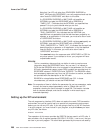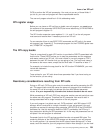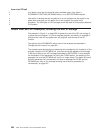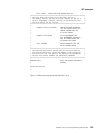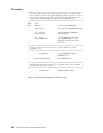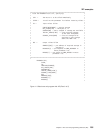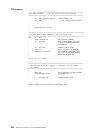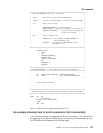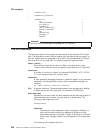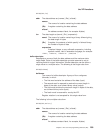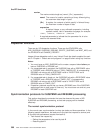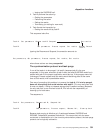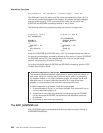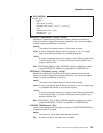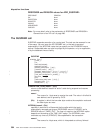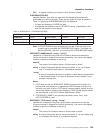
DFHSMMCX CLEAR
.
.
.
DFHSMMCX GET_LENGTH(100)
.
.
.
DFHSMMCX CALL, *
IN, *
FUNCTION(GETMAIN), *
GET_LENGTH(*), *
SUSPEND(NO), *
INITIAL_IMAGE(X'00'), *
STORAGE_CLASS(USER), *
OUT, *
ADDRESS((R6)), *
RESPONSE(*), *
REASON(*)
Important
You must set your parameters using only the XPI functions.
The XPI functions
The following sections of the chapter provide details of the individual XPI function
calls. The description of each function defines only the options that are specific to
that call. Options that are applicable to all function calls are described in “General
form of an XPI call” on page 286. The following argument types are used:
name1, name2,....
Each of these refers to the name of a field of the given size in bytes.
“name1” means that the name you specify should be that of a 1-byte field.
literalconst
A number in the form of a literal, for example B'00000000', X'FF', X'FCF4',
"0", or an equate symbol with a similar value.
expression
A valid assembler-language expression: a decimal integer, or any arithmetic
expression (including symbolic values) valid in assembler language; for
example:
20; L'AREA; L'AREA+10; L'AREA+X'22'; SYMB/3+20 .
(Rn) A register reference. The parentheses shown here are required in addition
to those that surround the argument. For example: OPTION((R5)).
block-descriptor
Represents a source of both the data address and the data length fields. A
block-descriptor can be either a single value or a double value. The
following is the single-value form:
OPTION(blkdname)
blkdname
The name of a block-descriptor. A pair of contiguous fullwords, in
which the first word contains the address of the data, and the
second word contains the length in bytes of the data, as a fullword
binary value. Register notation is not accepted for this single-value
form.
The following is the double-value form:
XPI examples
298
CICS TS for OS/390: CICS Customization Guide



